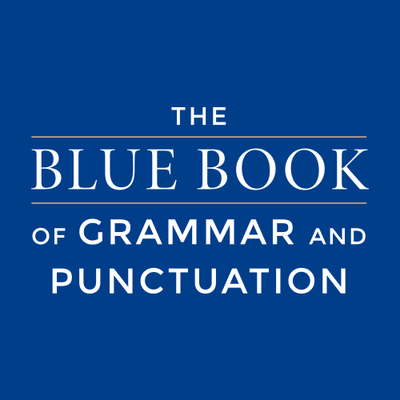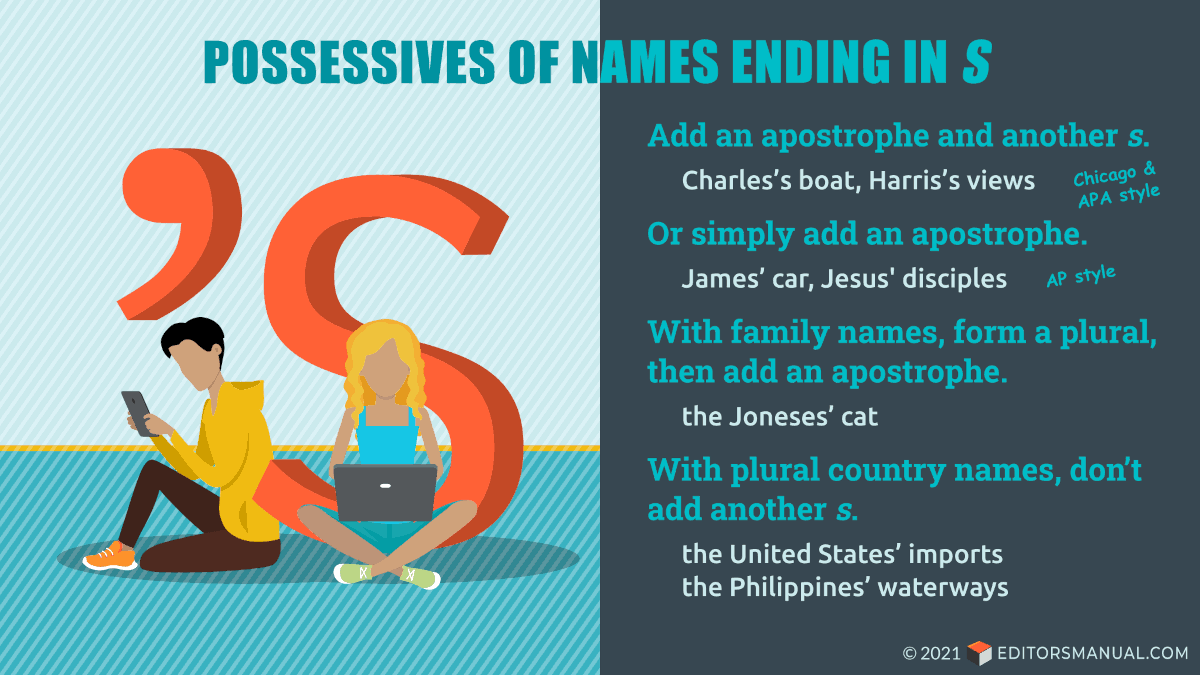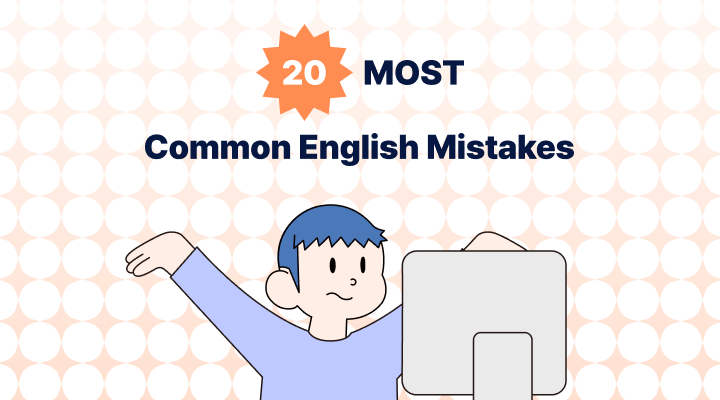With all its inconsistencies and irregularities, English is a particularly difficult language to learn after early childhood. However, the demand for English in this age of globalization is rising while the language is not getting any easier. Our Engram team collected the 20 most common English mistakes made by non-native speakers to help international English learners identify and solve these errors.
The most common mistakes by non-native speakers were found to be with articles and prepositions. Other notable common mistakes were with capitalization, verb tenses, idioms, subject-verb agreement, commas, run-on sentences, parallelism, word order, and formatting.
Consuming English content and listening to how native speakers speak are key to gaining new vocabulary and learning English grammar naturally, but not all English learners have the opportunity to have long interactions with native speakers or have time to watch thousands of hours of English media or read countless pages of English books. Engram’s list of common mistakes can help accelerate the learning process by pinpointing the biggest problems that non-native speakers struggle with.
On Engram's grammar checker, international English speakers can also input their English writing to check if their sentences sound natural and get immediate feedback. The immediate feedback and suggestions save time, as there is no need to hire a human proofreader or ask an acquaintance to check over the sentences.
Check out each article to get an in-depth look at the most common mistakes made by non-native English speakers.
🖊️ Best AI Proofreader for Non-Native English Speakers: Grammarly, QuillBot, Engram, ProWritingAid, Ginger, Trinka [Updated 2023]
🖊️ Best AI Paraphraser for Non-Native English Speakers: Grammarly, QuillBot, Paraphrasing Tool, Paraphraser.io, Wordtune, Engram (2023)
1. Articles
The most common type of mistake non-native speakers of English make is with the articles a, an, and the. English learners have trouble with knowing which article to use and if an article is even needed in the first place.
2. Prepositions
The second most common mistake in English made by non-native speakers is with prepositions. Our Engram team compiled the most common preposition mistakes made by people whose first language is not English to help guide English learners around the world.
3. Capitalization
Capitalization may not seem essential to some non-native speakers, especially to those whose first language does not involve any capitalization, but this is vital in English. Proper capitalization is key to making your writing look professional.
4. Verb tenses
Simple past? Past perfect progressive? All the different verb tenses can seem complex to those whose first language is not English. Here’s a breakdown of the basic verb tenses in English.
5. Countable and uncountable
What’s wrong with the following sentence? You should drink lots of waters. Non-native speakers can have trouble with knowing which nouns are countable and uncountable. Here, we break down the categories of nouns that are uncountable so you can distinguish them from countable nouns.
6. Idiomatic usage errors
Sometimes there’s no logical answer to why English is the way it is. That’s certainly the case for idioms which can give non-native English speakers trouble. Our Engram team compiled some common idiomatic errors that English learners tend to make.
7. Subject-verb agreement
Subject-verb agreement errors are common mistakes even among native speakers of English at times, especially when the subject and verb are not right next to each other. In some languages, the verb is not dependent on the subject of the sentence, but that is not the case with English which gives many non-native speakers trouble.
8. Punctuation - missing commas
A common mistake made by non-native speakers of English is omitting a comma in a spot where the small but powerful punctuation mark is needed. A comma segments a sentence in the necessary spots to make the sentence structure more clear and understandable to a reader. Our Engram team compiled the most common scenarios when English learners tend to forget to put commas.
9. Run-on sentences and comma splices
Run-on sentences and comma splices are common mistakes that non-native English writers include in their work. When speaking quickly, we may barely pause between some sentences, but if we transpose that to writing by having a lack of or incorrect punctuation between sentences, it will result in grammatically wrong run-on sentences and comma splices.
10. Subordinating conjunctions with coordinating conjunctions
Spot what’s wrong with this sentence: Even though that was Kelly's idea, but the manager presented it like it was his own. This is a common mistake that non-native speakers of English make: using subordinating conjunctions incorrectly with coordinating conjunctions.
11. Double negatives
If English is not your first language, you may have trouble with double negatives in your writing or speech. Worry not because this is a common phenomenon for English learners who may find double negatives illogical in their native language. Here are some simple solutions to solving double negative errors.
12. Negative questions and agreeing with negatives
You didn’t take any classes? Should you answer yes or no if you did take classes? Non-native English speakers tend to answer negative questions incorrectly without realizing it. Our Engram Blog will help guide to you answer these tricky questions.
13. Fewer vs. less
Are there less cars or fewer cars? Differentiating between situations that require fewer versus less can be difficult for non-native English speakers. Here, we go through how to tell which one to use.
14. Parallelism
Although English is an extremely inconsistent language, some parts of English grammar need to be consistent. Non-native English speakers frequently make parallelism errors, but fortunately the grammar rules are logical and simple to follow.
15. Apostrophe misuse
Another common mistake made by non-native English speakers is apostrophe misuse. Although small like its land-dwelling cousin the comma, the apostrophe is an essential part of the English language and conveys necessary information to the reader. Check out our guide on the different uses of the apostrophe so you can become a master of the tiny punctuation.
16. Misplaced modifiers
Like errors with subject-verb agreement and parallelism, misplaced modifiers are grammatical mistakes that are easy to fix with simple logic. Although non-native speakers of English frequently misplace their modifiers, they can easily fix such mistakes with our simple guide.
17. Word order
Many non-native speakers of English struggle with natural word order. Native speakers naturally learn word order when they are young, but non-native speakers can have trouble mastering it later in life. Check out Engram's guide on word order where we point out the most common mistakes in word order made by English learners.
18. Spelling
With spell-checking software, anyone can spell correctly on a computer or phone. However, when it comes to spelling in person, both native and non-native speakers of English may struggle. Here, we break down the most common types of spelling mistakes to help you become a spelling guru.
19. Formatting
Like proper capitalization, correct formatting is essential to making your writing look professional. If your formatting is incorrect or inconsistent, your reader may think your written work is not credible and be doubtful of the content of your text as well.
20. Borrowed English words and phrases in your own language
Because of the globalization of English, many borrowed English words and phrases are used in other languages. However, the speakers of these other languages may use these English words or phrases differently than how a native English speaker may use them.
Reference:

_0.jpeg.jpg?itok=BMr8lceM)





https://www.autoenglish.org/mistakes/mis-order.pdf


























